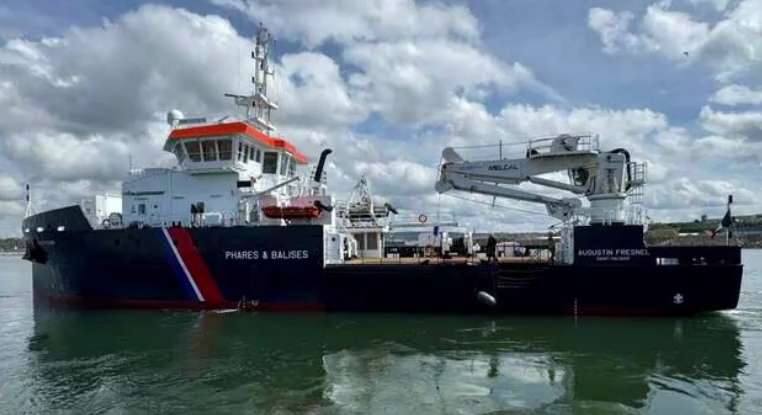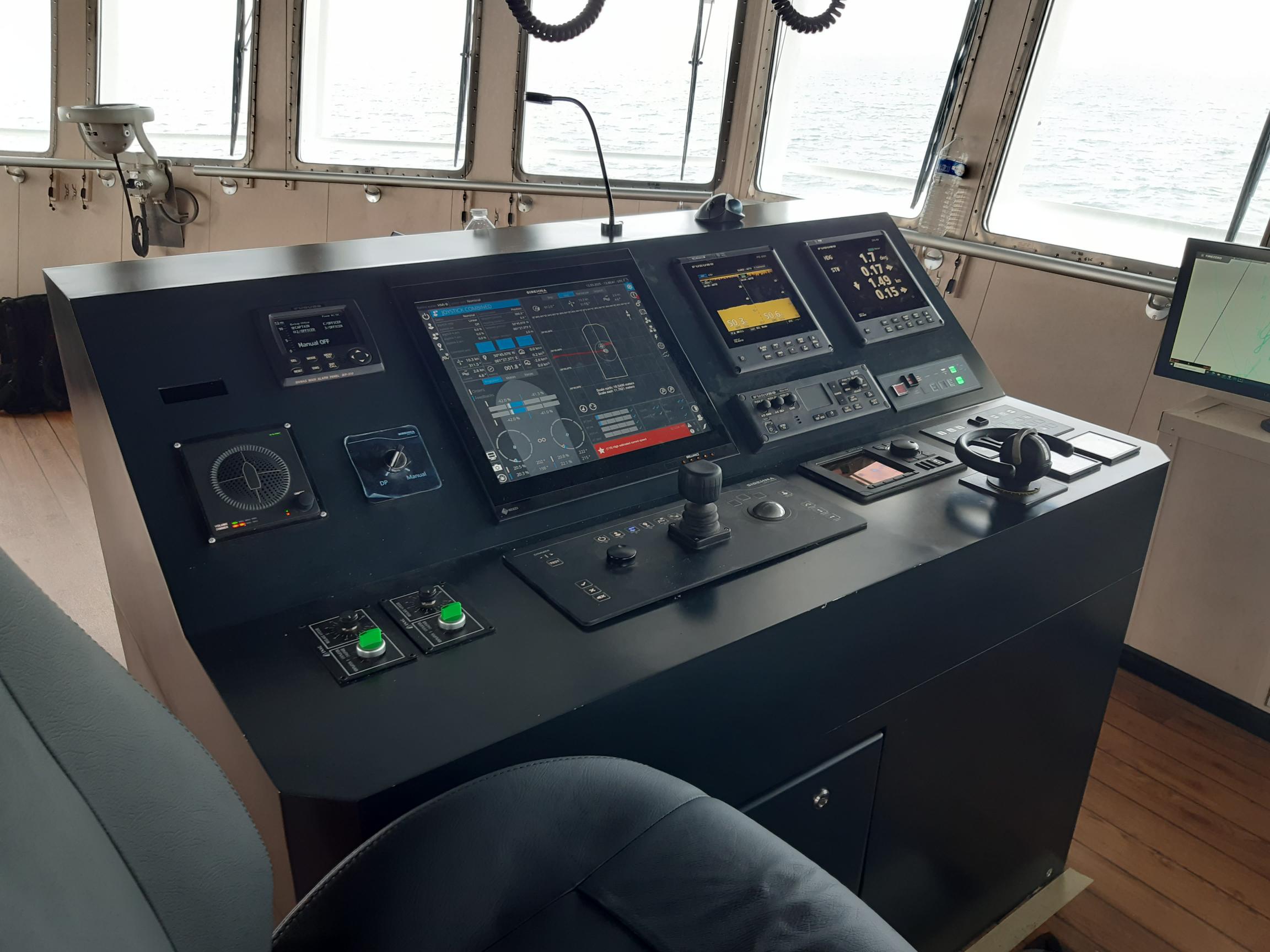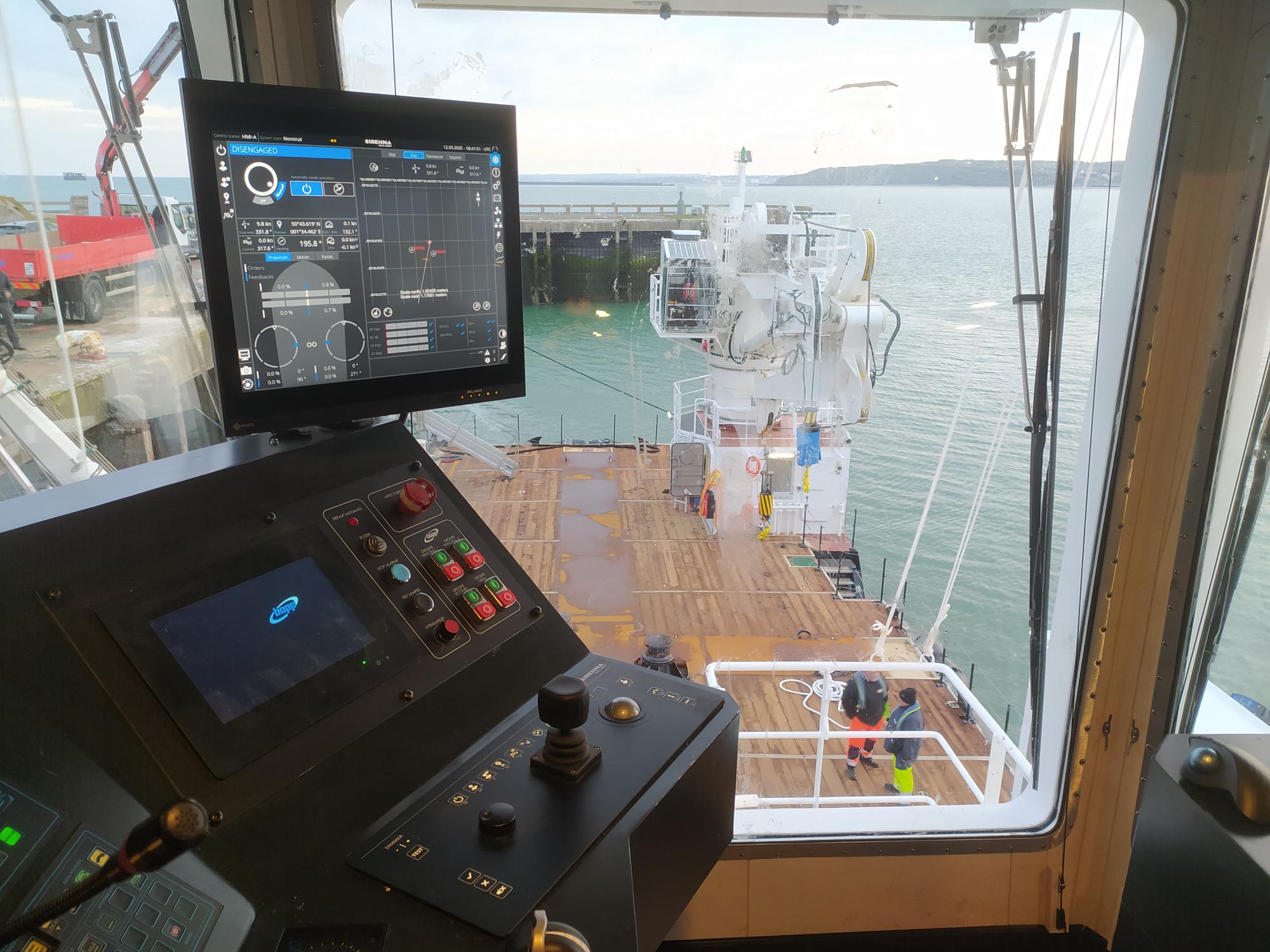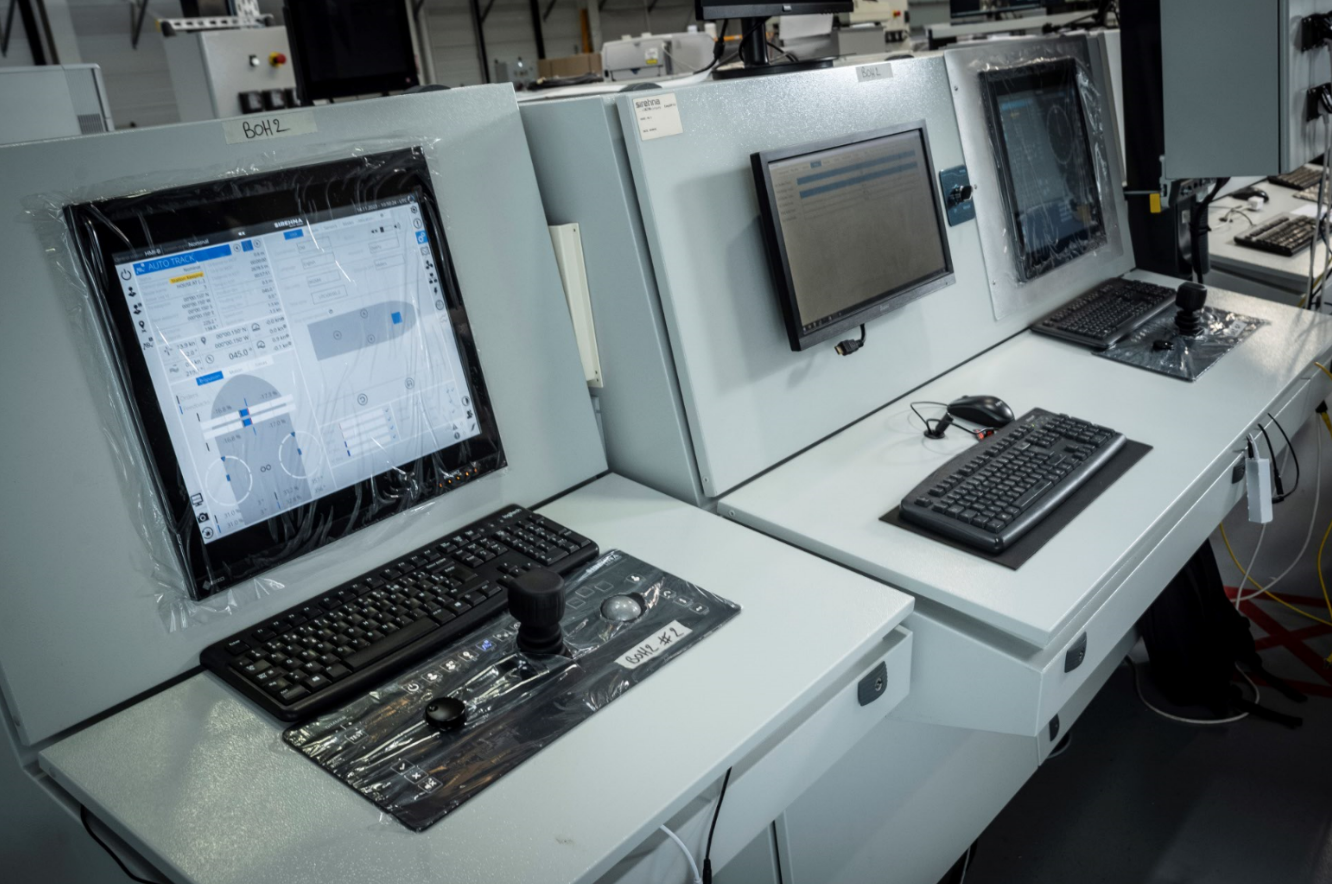
In March 2025, SIREHNA successfully completed sea trials for the acceptance of the Dynamic Positioning system (DP1) installed on the Augustin Fresnel, the new 55-meter hydrogen-hybrid buoy-laying vessel, making it the largest buoy tender ever operated by the APB (Armement des Phares et Balises), which reports to the Directorate-General for Maritime Affairs, Fisheries, and Aquaculture (DGAMPA).
Built by the SOCARENAM shipyard in Boulogne-sur-Mer on behalf of the armament authority Phares et Balises, this innovative vessel is intended for the maintenance of maritime navigation aids.
The Augustin Fresnel, set to become the largest vessel in the APB fleet, will be based between Saint-Nazaire and Le Verdon. It is capable of handling moorings and buoys weighing up to 15 tonnes and with a volume of up to 20 m³.
This new system is the 119th Dynamic Positioning system delivered by SIREHNA across all types of vessels, and the fourth system installed on a vessel operated by Phares et Balises.
The system was designed in compliance with BUREAU VERITAS DP1 DYNAPOS AM/AT certification standards and requirements.
A Dynamic Positioning System tailored to a specific operational context
The equipment provided by SIREHNA is based on a robust, marinized hardware and cybersecured software architecture. Including:

Copyright all right reserved 2025 - SIREHNA
-
-
Two workstations (fore and aft) equipped with 19" screens, joystick panels, and trackballs, enabling dynamic positioning (DP) navigation both during transit and buoy-laying operations.
-
An MRU (Motion Reference Unit) sensor for accurate measurement of roll and pitch.
-
A secured power supply via an uninterruptible power supply (UPS) to ensure continuous operation under all circumstances.
-
A three-position selector switch to toggle between manual control, DP control, or independent joystick control.
- A fixed orange signal light, directly connected to the selector, to visually inform the crew on the aft deck of the current navigation mode.
-

Advanced functions and maneuvering modes
SIREHNA’s DP1 system enables precise low-speed maneuvers, which are essential for delicate buoy-laying operations, through the following modes:
-
- Manual Joystick Mode: Allows for direct and intuitive semi-automatic control of the vessel’s movements.
- Combined Joystick Mode: Facilitates complex maneuvers by synchronizing the control of multiple systems with automatic adjustments based on operator commands.
- Station Keeping (Heading and Position): Maintains the vessel’s position and heading as defined by the operator, within the operational limits of the system, while compensating for environmental forces (wind, waves, and current). This mode also enables transitions between different setpoints for position and heading, using all available or selected actuators.
- Auto Track Mode: Guides the vessel through a series of specified waypoints with high precision (entered via the HMI, through an ECDIS, or imported from a .gpx file).
All modes and functions of the vessel’s DP1 Dynamic Positioning System were tested and approved during the Factory Acceptance Test (FAT), using a simulator that accurately replicates the vessel’s model, environmental conditions, and specific operational context.

Complete integration with the vessel's hybrid propulsion
SIREHNA’s DP system interfaces seamlessly with the vessel’s propulsion, which is provided by two azimuth thrusters with fixed-pitch propellers housed in nozzles, each driven by a variable-speed electric motor of approximately 700 kW.
The vessel is also equipped with two electric bow thrusters, each powered by a variable-speed electric motor of approximately 220 kW, ensuring DP performance and vessel stability during operations up to sea state 4.
Capable of reaching a speed of 13 knots and offering a 14-day operational autonomy, the new flagship of Phares et Balises offers excellent maneuverability and the ability to maintain station for buoy-laying operations even under challenging conditions.
This new ocean-going buoy-laying vessel also broadens the range of onboard technologies aimed at reducing its environmental footprint.
It features a “zero-emission” navigation capability, producing no CO₂ or greenhouse gas emissions, thanks to an electric propulsion system powered by batteries, with extended autonomy provided by a hydrogen fuel cell using green hydrogen.
Cyber Secure by design
The software and hardware design of this new system benefits from SIREHNA's work in the world of naval defence, which ensures the most advanced level of security in line with the new regulations resulting from the work of the IACS applicable to new ships from July 2024 and which must be complied with by shipowners and maritime class and certification companies (UR26 and UR27) - Cyber resilience & integrity.
